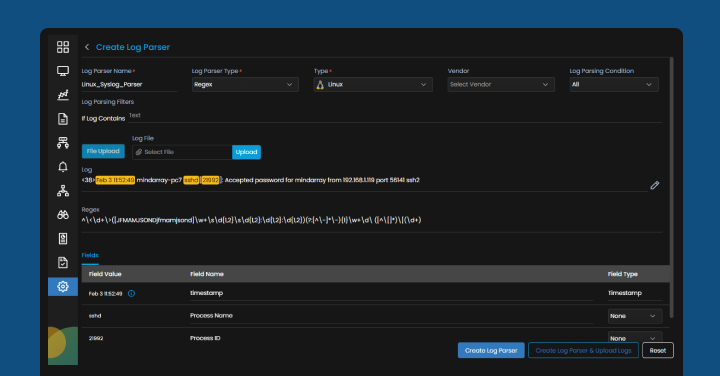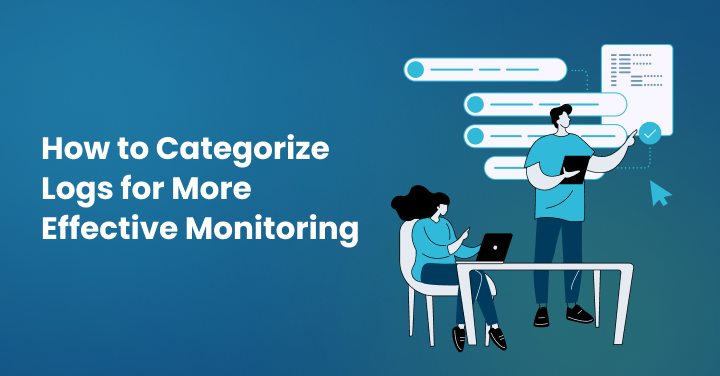Here in this blog, we will discuss in detail how log analysis techniques are vital for the operation and protection of today’s complex IT networks. Understanding the functioning of the systems from where the log data is collected and analyzing user behavior is very much possible from log data originating from an organization’s software applications, networks, and security tools. They can also identify some situations that could be implying security issues.
Here in this blog, we will understand the importance of Log Analysis platform and how it can impact the outcome of a business. In addition, we will dive deep into the realm of essential factors you must consider while selecting the best Log analysis platform.
What is log analysis and why is it important in the field of technology?
Once the data has been taken in, however, where and how the log analysis platform structures the log data also plays a crucial role. Search for good storage solutions. These can be resident on the organization’s systems or servers or can be hosted externally. Think about how much space is required for the storage, how efficient it is when you have to scale up, how often you retain the data, and how much each type of storage costs.
Precautions must be taken regarding the data during its collection and storage. Log data should be protected to ensure that it is as secure and whole as possible. Preventing data from being read while it is at rest or when it is in transit leads to access controls and compliance certificates as measures that need to be evaluated when determining the security of the platform in question.
Log analysis is becoming more straightforward and more efficient through machine learning and pattern recognition. Using these tools can prevent a problem from escalating and occurring. Selecting the right tools for log analytics is often a matter of choosing a platform, as it plays an important role in safeguarding sensitive data. It must be done by providing attention to detail in various aspects, such as better data collection and analysis of the relevant information that suits the organization well.
Scalability and Performance
Different organizations deal with log data from diverse places in today’s world. When using such data that has actionable insights, the first step is to have a log management tool that will scale with it as the data grows. It should handle the rising amounts of information without compromising your system’s performance. See how effectively the platform addresses scalability issues in processing and storing significant log information. A good platform will still be imputable to handle large volumes of data without a hitch.
Secondly, consider how the platform indexes and searches the logs. How fast and effectively can it assist you in categorizing logs so you don’t have to wait whenever you need data? Indexing and search capabilities are vital to the platform’s functionality and should provide fans with fast and effective means of fixing problems in real-time log analysis.
The following criteria will help when evaluating the system performance in terms of design and technology. Further, is it designed for distributed processing or parallel processing? Most of these design choices can significantly impact the platform’s readiness to accommodate big-log data. It should do this without reducing the analysis speed, hampering the application performance essential to returning timely results and identifying system problems.
Data Ingestion and Storage
Accurate log analysis is based on the platform’s flexibility in ingesting logs from various sources while collecting valuable insights. Of course, you should learn if the platform integrates into your existing infrastructure and whether it can handle different logs and protocols in real time. It is very advisable to have a flexible way of dealing with data and thus use a scalable log collector. It enables you to assemble all the required material for a comprehensive assessment. Additionally, if your data ingestion involves extracting information from websites, Scrapy can support the process by gathering structured data from online sources.
Search and Analysis Capabilities
Shape Search and analysis interface Log analysis itself is beneficial in identifying valuable data from primary log information. You need the kind of platform that can search and analyze well, following best practices for optimal results. Choose tools with powerful and flexible query language and data visualization capabilities and a set of canned reports available by default. These features will provide you with a proper vision of your logs. Everyone should be able to use the platform with no difficulty. It should also be effective for those subjects where the users could have little or no advanced technical knowledge.
Determine whether the system can accommodate real-time log analysis and event computing. Can it watch and analyze log data live? Does it support the identification and response to incidents as they progress? Does it have the ability to correlate events and anomalies originating from different logs and provide a holistic view of the system’s activity? Such abilities are vital for a fast and efficient reaction in case of an incident and risk minimization.
Security and Compliance
Shape Security and compliance visuals Informatization of log data means that they contain different and sometimes critical information, so safety and adherence to the rules are essential. Your chosen platform must maintain data security and adhere to specific compliance standards. Finally, be sure to know whether your selected platform has secure user authentication, freedom to access, and encryption.
It’s better if the platform adheres to rules relevant to your discipline. For instance, if you deal with financial information, you require a log analysis platform that complies with the laws of PCI DSS. Any organization operating in the healthcare industry has to follow HIPAA rules to protect such information.
See how the platform can be helpful from a security audit perspective. Is it possible to build audit trails of who audits and alters the data? Does it contain facilities that would protect the integrity of a log, and, at the same time, it does not allow a user to deny logins? Selecting the security and compliance-conscious platform will ensure that your data is protected, and it becomes easier to demonstrate that your business complies with fundamental regulations.
User Experience and Support
It may also be worth saying that when defining, never allow features to obscure user experience and vendor support. First, the platform must be simple to navigate. This also improves situations where security teams, system administrators, and others search for information. A user-friendly platform allows new users to learn from the system easily. When the site is easy to use, it can assist in swaying your team since it will be easier for them.
Another factor is support from the servicing vendor. Is good documentation, online help, and some form of quick customer support included in the program? Any good vendor should consistently continue supporting you. They should assist in answering questions, resolving issues, and giving you a log of how and when to review and interface the platform._recursive.
Finally, more about the vendor’s experience that can perform log analysis should be evaluated. Customers and testimonials of their successful cooperation with the vendor who has provided reliable solutions and consistent support should be available. Picking a good vendor means selecting a company that understands logs and can serve you properly.
Conclusion
Therefore, selecting an appropriate organization log analysis platform is crucial. From Schmidt, S. and Koch, S., 2019, Scaling, data security, and data management are well-handled by it. When you decide, choose its efficiency and say something about its data storage, how you can look for the information, security measures, and usability. A highly developed log analysis platform enhances your team’s performance and allows you to stay within compliance guidelines. Also, noting these points can simplify your log analysis and to improve your organization. If you want more information on making the right decision when choosing the right log analysis platform, call us or visit our website for further assistance.
FAQs:
Log analysis involves examining the digital marks left by software and network devices. It involves collecting and organizing logs as part of the process of reviewing to understand how the system works, spot performance issues, and track security events.
Log analysis software helps automate this process and makes finding useful insights from the logs easier.
Log analysis is very important for incident response. With security log analysis, it helps security teams find and fix security incidents quickly. This process is an excellent tool for root cause analysis.
It shows where system errors and slowdowns start. By looking at patterns in log data, organizations can improve their security posture and deal with possible weaknesses before they become a problem.
When you look at log analysis tools, focus on essential features. Real-time log monitoring helps you get immediate insights and respond to incidents faster.
Additionally, real-time anomaly detection is important, too. It lets you spot unusual patterns in log data that may show security risks.
Make sure the platform you pick can visualize data, set up customizable alerts, and work well with your current security information and event management (SIEM) systems.
Embrace the power of artificial intelligence! Machine learning and pattern recognition can improve your log data analysis by utilizing a pattern book.
You can use machine learning to automatically analyze log data, find unusual patterns quickly, and create alerts for potential threats.
These new technologies help your organization stay ahead of changing security threats and improve incident response.








